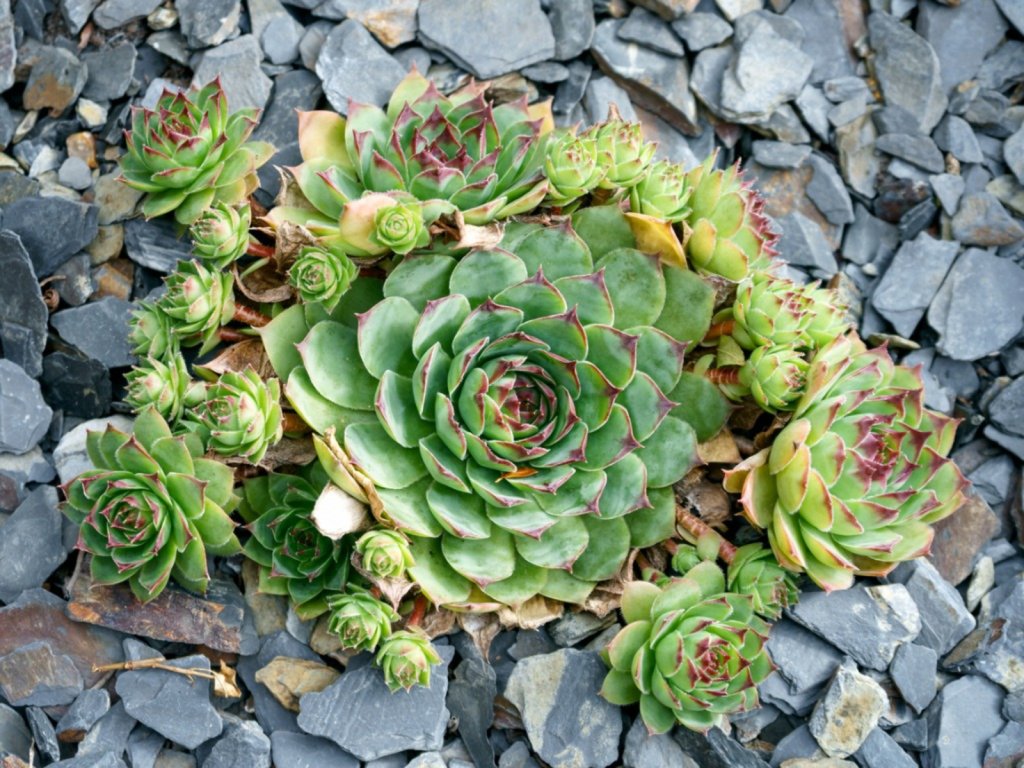We all are becoming more and more environmentally friendly. Whether it is our lifestyle, our appliances or even technology, each and everything is leaning towards an environment-friendly approach. A similar thing is happening with home decor as well.
We all have introduced plants in our houses, what we call now houseplants. This is something which we all must do for ourselves. This will not only bring us closer to nature but will also give our homes a natural aesthetic.
Here in this section, we will be talking about one such plant, which is called Hens and Chicks. This is one of the widely used plants and it is probably possible that you may even have one in your home.
We will learn more about this plant and will learn a few tips as well, so we can make the best out of it. So, let’s begin.
What are Hens and Chicks?
Well, it is not what its name conveys. It is obviously not hens and their offsprings, which are known as chicks widely. It got its name from the fact that when this plant generates its offspring, they surround its parent plant in the same manner as chicks surround a hen when they come out hatching. We hope that it has relaxed a bit of your curiosity.
Other than its interesting name and story behind it, there is more which we should know. It comes from a succulent family. They do not grow vertically, rather they spread around and lay low on the grounds. It looks like some concentrated rings have formed around each other.
As they stay toward the ground it could be an excellent option to cover some ground. This would be best to grow in a wide and long plant pot, those which come in the cuboidal form.
How to Care for Hens and Chicks?
As we know that a succulent requires the least care, which mostly includes, water and light. A similar thing applies to this plant as well. There are a very few things which you should keep in mind and you will master the art of caring for and propagating this beautiful plant.
Light
If you reside in an area where the sun is hot throughout the day, it is better to keep it inside. It can be grown in shade and open sunlight as well. You just need to know about your environment.
It can grow optimally in bright sunlight. Keep it in direct sunlight for 6 to 8 hours a day and you will see them flourish charmingly. This will also help you get the maximum offspring as well. But, there is one thing which you need to take care of, is that after flower season, the mother part (a hen) dies and you have to remove it to let the offsets (chicks) grow without any disturbance.
Soil
Here comes the best part about it. Unlike other plants, they are ideal to grow between stones, wall crevices, and other similar places where other plants struggle. So, it could be a better option for your rock beds and rock gardens.
It requires sandy soil, which is not a hard thing to find. Just make sure it is well-drained and you have the perfect soil for your hens and chicks. If you are not so enlightened about the soil then you also buy the soil mix for cactus and succulents and it will work just fine.
It can grow in a wide range of salinity and pH so, you do not have to worry much about the pH of your soil. You can propagate it quite easily without any hectic procedures. You can learn to multiply these plants here – https://succulentexperience.com/hens-and-chicks-propagation/
Water
The worst thing you can do is, overwatering and mix more than enough fertilizer for your hens and chick. So, be attentive while watering your hens and chicks.
Water only when the soil is dry but, if you have bought a new one then water them sufficiently just to let it establish. They are native to Africa, especially the drought zone therefore, they can withstand the lack of water for weeks, unlike berries or apples.
Environmental Conditions
Other than those basic conditions, temperature and humidity can also have a bad impact on the growth of your hens and chicks.
Humidity may not be a reason to worry but temperature surely is. Make sure you make them available for an appropriate amount of sunlight. If the temperature had gone down then it can push your plant to shift to a semi-dormant state.
Therefore, give them proper care and proper sunlight as well. It can withstand a wide range of humidity levels and hence you do not need to worry much about it.
Closing Note
There are plenty of kinds of hens and chicks available and all of them are suitable for your home. This care guide will work for every one of them. So, you can explore their wide range of types and can select the one you like.
Make sure you follow these steps carefully and do not overlook any one of the concerns mentioned above. Just follow these steps carefully and you will be giving your hence and chicks all that they need from you. Once, they are happy and well nurtured, you will see how beautifully they can grow and enhance the vibe of your house.
They are quite delicate and hence require proper handling especially while removing the mother part (hens) after the flowering season. Do not press hard, neither twist and tilt the leaves much.

